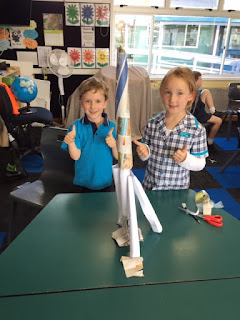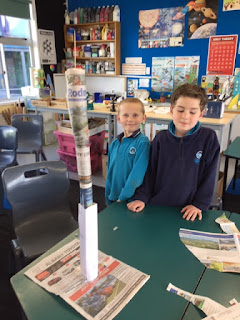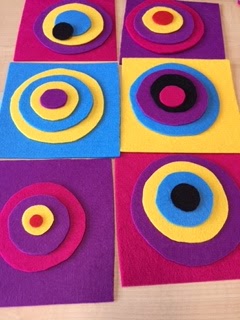We looked at different pattern used on buildings - line, shape, colour, texture etc. Some groups looked at works of creative architects such as Anton Gaudi and Friedensreich Hundertwasser.
Many children knew people who are architects or engineers.
Next we had a challenge to design and build the tallest radio mast tower. The challenge was that we had limited equipment (newspaper and tape), and limited time. We discussed the importance of planning, trying our design, noticing if there were issues (where is it failing or not working) and trying to problem-solve. I was amazed at how many different designs we had and how many children actually got a tower standing. It had to be self-supporting (it couldn't be taped to anything or lean on anything). This was a challenge as children found that when they built high their buildings weren't very stable, so they had to think of ways to strengthen and support them. We had some that were over a metre high - just from 3 flimsy pieces of newspaper - impressive! Lots of amazing problem solving and collaboration this week. This is a good one to try at home - perhaps you could challenge your kids to see who can make the tallest tower out of just 3 sheets of newspaper...















































